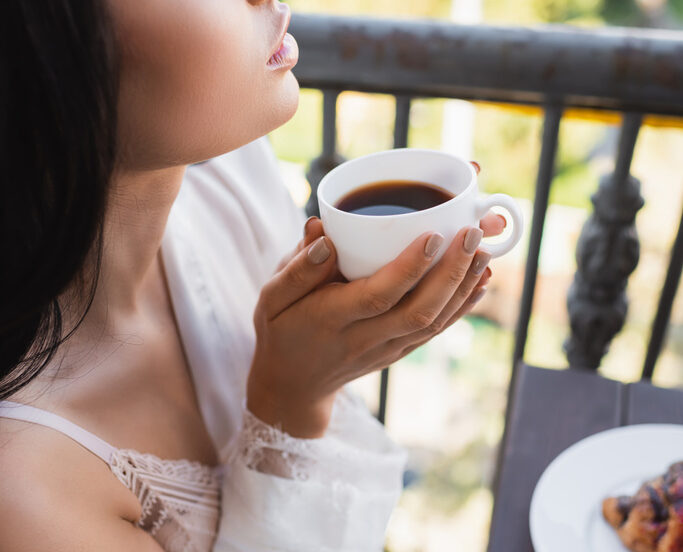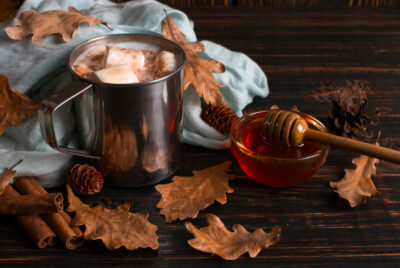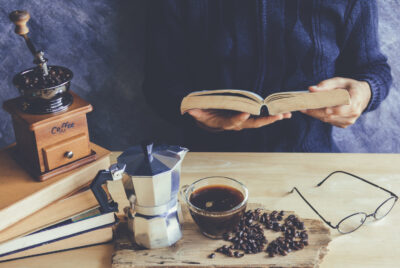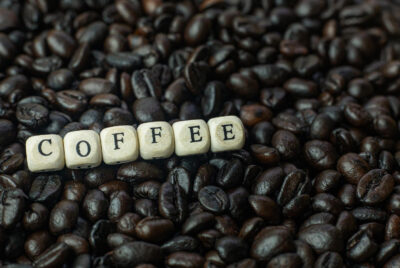Making the Perfect Cup
Have you ever wondered why some mornings start with a coffee that makes you smile, while others leave you wishing you’d visited your local café instead? The secret to making the perfect cup of coffee at home isn’t just about pressing a button on your machine—it’s about understanding the art and science behind every brew. Whether you’re a coffee novice or an aspiring home barista, this guide will transform your daily coffee ritual into something extraordinary.
The Journey to Coffee Excellence
Let’s be honest: coffee isn’t just a beverage—it’s the companion to our early morning thoughts, the facilitator of great conversations, and sometimes, the only thing getting us through that 3 PM slump. When you master the art of making the perfect cup at home, you’re not just saving money; you’re creating a daily ritual that can bring genuine joy to your life.
Think about it: the difference between a mediocre cup of coffee and an exceptional one isn’t just about taste—it’s about starting your day with intention, precision, and a moment of mindfulness. When you craft that perfect cup, you’re treating yourself to a café-quality experience without leaving your kitchen.
Setting Up Your Coffee Arsenal
The Non-Negotiables
Before we dive into the brewing process, let’s talk about the tools you’ll need for making the perfect cup. Don’t worry—you don’t need to break the bank to get started:
- A Quality Coffee Grinder: This is perhaps your most crucial investment. A good burr grinder will transform your coffee experience by ensuring consistent grounds, which is fundamental to making the perfect cup. Think of it as the foundation of your coffee journey—everything else builds upon this.
- A Reliable Brewing Device: Whether you choose a French press, pour-over setup, or drip machine, select something that matches your lifestyle and coffee preferences. Each method has its unique charm in the quest for making the perfect cup.
- A Kitchen Scale: Precision matters when making the perfect cup of coffee. A simple digital scale helps you maintain consistent ratios and replicate your best brews.
- A Temperature-Controlled Kettle: Water temperature significantly impacts extraction, and therefore, your success in making the perfect cup. While a standard kettle works, one with temperature control gives you more precision.
Level-Up Options
Ready to elevate your coffee game further? These tools can enhance your journey to making the perfect cup:
- A Gooseneck Kettle: Its precise pour control is especially valuable for pour-over methods, giving you more control over the brewing process.
- A High-End Burr Grinder: While entry-level burr grinders work well, premium models offer more consistency and control over your grind size.
- A Coffee Refractometer: For the truly dedicated, this tool helps measure coffee strength and extraction—though it’s certainly not required for making the perfect cup.
The Foundation: Selecting Your Coffee Beans
Freshness: The First Step to Making the Perfect Cup
The journey to making the perfect cup begins long before water touches your grounds. Fresh beans are non-negotiable—they’re the raw ingredient that can make or break your coffee experience. Look for beans with a recent roast date (ideally within the last two weeks) and buy in smaller quantities that you can use within 2-3 weeks.
Understanding Coffee Roasts
Your preference in roast level plays a crucial role in making the perfect cup that suits your taste:
- Light Roasts: These beans reveal bright, acidic, and often fruity notes. They’re excellent for pour-over methods and for those who enjoy discovering complex flavor profiles.
- Medium Roasts: The balanced option, offering a harmony between origin flavors and roasting characteristics. These are versatile and forgiving when you’re learning about making the perfect cup.
- Dark Roasts: Bold, rich, and often featuring chocolate or caramel notes. They work beautifully in espresso or French press preparations.
The Geography of Flavor
Different growing regions produce distinctly different coffees, each bringing something unique to the art of making the perfect cup:
- Ethiopian beans often burst with floral and fruity notes
- Colombian coffee typically offers a balanced, caramel sweetness
- Indonesian varieties frequently present earthy, full-bodied profiles
- Brazilian beans usually provide nutty, chocolate-forward flavors
The Secret Ingredient: Water Quality and Temperature
Water: The Overlooked Hero in Making the Perfect Cup
Here’s a fact that might surprise you: your cup of coffee is about 98% water. Using the right water is crucial for making the perfect cup, yet it’s often overlooked. Filtered water removes impurities that can affect taste while retaining the minerals necessary for optimal extraction.
Temperature Precision
The ideal water temperature for making the perfect cup falls between 195°F and 205°F (90-96°C). Why this specific range? Too hot, and you’ll bring out bitter compounds; too cool, and you’ll under-extract, leading to sour, weak coffee. If you don’t have a temperature-controlled kettle, bring water to a boil and let it rest for about 30 seconds before brewing.
The Science of Grinding
Why Grind Size Matters
Your grind size directly affects extraction rate and, consequently, your success in making the perfect cup. Think of it like this:
- Coarse Grounds (like sea salt): Ideal for French press and cold brew
- Medium Grounds (like regular sand): Perfect for drip coffee and pour-over methods
- Fine Grounds (like table salt): Essential for espresso
- Extra Fine (like powder): Reserved for Turkish coffee
Grinding Tips for Success
- Grind just before brewing—coffee starts losing flavor within minutes of grinding
- Clean your grinder regularly to prevent old grounds from tainting fresh ones
- Adjust your grind size based on taste: if your coffee is sour, try a finer grind; if it’s bitter, go coarser
Mastering Different Brewing Methods
The French Press
The French press method is beloved for its simplicity and ability to produce a full-bodied cup:
- Use coarse grounds (about 60g per liter of water)
- Add hot water (195-205°F)
- Stir gently after 30 seconds
- Let steep for 4 minutes
- Press slowly and serve immediately
Pour-Over
This method offers incredible control over the brewing process:
- Rinse your filter with hot water
- Add medium-ground coffee (about 60g per liter)
- Start with a 30-second bloom using twice the water weight of your coffee
- Pour in slow, steady spirals from the center outward
- Total brew time should be 2:30-3:00 minutes
Automatic Drip
While often overlooked by coffee enthusiasts, a good drip machine can produce excellent results:
- Use fresh, medium-ground coffee
- Ensure your water reservoir is filled with filtered water
- Use a proper coffee-to-water ratio (1:16 to 1:17)
- Clean your machine regularly
- Replace the water filter as recommended
The Golden Ratio: Precision in Making the Perfect Cup
The classic ratio for making the perfect cup is 1:16 (one part coffee to 16 parts water), but don’t be afraid to adjust based on your preferences:
- For stronger coffee: Try 1:15
- For lighter coffee: Go with 1:17
- For cold brew: Use 1:12
- For espresso: Approximately 1:2
Common Pitfalls to Avoid
Mistakes That Prevent You from Making the Perfect Cup
- Using old or stale beans
- Ignoring water quality
- Inconsistent measurements
- Incorrect water temperature
- Dirty equipment
- Mismatched grind size for your brewing method
Maintaining Your Coffee Equipment
Regular maintenance is crucial for consistently making the perfect cup:
- Daily: Rinse all equipment thoroughly after use
- Weekly: Deep clean your grinder and brewing devices
- Monthly: Descale your equipment if you have hard water
- Quarterly: Replace water filters in your coffee maker
Beyond the Basics: Elevating Your Coffee Experience
Customizing Your Perfect Cup
While purists might disagree, there’s nothing wrong with personalizing your coffee:
- Try different milk alternatives (oat milk creates excellent foam)
- Experiment with natural sweeteners like honey or maple syrup
- Add a pinch of cinnamon or cardamom to your grounds before brewing
- Create your own cold brew concentrate for iced drinks
Your Journey to Making the Perfect Cup
Remember, the perfect cup of coffee is both an art and a science. While this guide provides the framework, your perfect cup might look different from someone else’s—and that’s okay. The joy comes from the journey of discovery, the morning ritual, and the satisfaction of crafting something special for yourself or others to enjoy.
Take these principles as your foundation, but don’t be afraid to experiment and find what works best for you. After all, the truly perfect cup is the one that brings a smile to your face and sets the right tone for your day.
Quick Tips for Success
- Always start with fresh beans
- Invest in a quality grinder
- Use filtered water at the right temperature
- Keep your equipment clean
- Measure precisely
- Be patient with the process
- Trust your taste buds
- Enjoy the journey of making the perfect cup
Making the perfect cup of coffee at home isn’t just about following a recipe—it’s about creating a moment of joy in your day. With these guidelines, some practice, and attention to detail, you’ll be crafting coffee that rivals your favorite café in no time.




